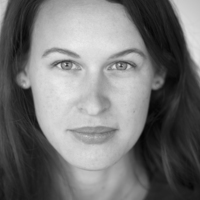- Bibliotheca Hertziana, Max-Planck-Institut für Kunstgeschichte, Medieval Department - Dir. Tanja Michalsky, Department MemberMasaryk University, Art History, Faculty Member, and 2 moreadd
- Sabina is a postdoctoral researcher affiliated with the Center for Religion and Heritage at the University of Groning... moreSabina is a postdoctoral researcher affiliated with the Center for Religion and Heritage at the University of Groningen.
Her current interest is on the medieval treasuries of female convents and questions of gender, historiography, and cultural heritage.
She holds a PhD in Art History from Sapienza, University of Rome, and Masaryk University in Brno (2023). Her Ph.D. focused on the art-historical reassessment of 10th-century Rome.
She was a Pre-doc Fellow in the Bibliotheca Hertziana and a visiting scholar at the CUNY in New York in 2022.
She published texts on questions regarding the visual and material culture of Rome, the historiography of Medieval Art History, medieval perception of sacred and holy sites, the construction of cultural landscapes, and the use of Christian relics as a means of constructing identity.edit
An ivory diptych known as the Milan Passion diptych, the Latin diptych, or the Diptych of Easter mysteries, decorated with scenes of Christ's Passion, Death and Resurrection, and nowadays preserved alongside other ivory objects in the... more
An ivory diptych known as the Milan Passion diptych, the Latin diptych, or the Diptych of Easter mysteries, decorated with scenes of Christ's Passion, Death and Resurrection, and nowadays preserved alongside other ivory objects in the Cathedral Treasury in Milan, is among those medieval objects whose original purpose is extremely difficult to understand (fig. 1). The diptych's place of production and original function are both unknown, and it is also difficult to determine whether or not it was created for the Milanese Cathedral. The diptych is composed of two separate ivory panels (ca 31,5ϫ11,1ϫ0,9 cm) en-47
Research Interests:
Research Interests:
This article argues that the movement of pilgrims on their way to the sacred place was a decisive part of experiencing the sacred. This is demonstrated in the case of the medieval monastery at Mont-Saint-Michel in Normandy, which offers a... more
This article argues that the movement of pilgrims on their way to the sacred
place was a decisive part of experiencing the sacred. This is demonstrated in the
case of the medieval monastery at Mont-Saint-Michel in Normandy, which offers
a wide range of hagiographical sources. An analysis of these sources suggests that
the surroundings of the Mont were transformed into a sacred landscape where
rituals took place. The landscape was dominated by the monastery, culturally,
politically and visually, as the Mont was visible from a signifcant distance. The
visibility of the Mont from its surroundings enhanced this process. The question
of how the sacred was diffused into its surroundings is addressed as well.
place was a decisive part of experiencing the sacred. This is demonstrated in the
case of the medieval monastery at Mont-Saint-Michel in Normandy, which offers
a wide range of hagiographical sources. An analysis of these sources suggests that
the surroundings of the Mont were transformed into a sacred landscape where
rituals took place. The landscape was dominated by the monastery, culturally,
politically and visually, as the Mont was visible from a signifcant distance. The
visibility of the Mont from its surroundings enhanced this process. The question
of how the sacred was diffused into its surroundings is addressed as well.
